Sample information |
|
| Picture |
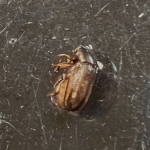
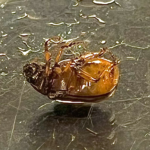
|
|---|---|
| Location | |
| Collection date | 09/13/2022 |
| Captive / Cultivated? | Wild-caught |
| Group | Palm Beach Atlantic University |
| Observations | Brown beetle with a hard shell. This sample has six legs. The sample also has a black line down its shell. |
| Putative identification | Arthropoda Insecta Coleoptera |
Methods |
|
| Extraction kit | DNeasy (Qiagen) |
| DNA extraction location | Abdomen |
| Single or Duplex PCR | Single Reaction |
| Gel electrophoresis system | Standard electrophoresis system |
| Buffer | TAE |
| DNA stain | Other |
| Gel images |
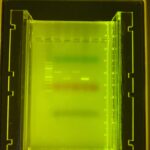
|
| Protocol notes | Only one sample arthropod was collected. We used 6X loading dye for the gel electrophoresis. The gel was run at 100V until the smallest visible fragment was about two thirds down the gel. Lane 1 is the 100 bp DNA ladder, Lane 2 is arthropod sample 1, Lane 3 is positive arthropod control, Lane 4 is negative arthropod control, Lane 5 is positive DNA control, and Lane 6 is the water blank. |
Results |
|
| Wolbachia presence | No |
| Confidence level | High |
| Explanation of confidence level | The positive arthropod control was amplified correctly and the 16s rRNA gene was visible on the gel and calculated to be 681 base pairs. The negative arthropod control CO1 gene was also visible on the gel at 395 base pairs. We also had a positive Wolbachia DNA control which was amplified properly and is 681 base pairs in length. The sample arthropod fragment matched the negative arthropod control fragment with a length of 681 base pairs. |
| Wolbachia 16S sequence |
N/A
BLAST at The Wolbachia Project BLAST at NCBI
|
| Arthropod COI sequence |
N/A
BLAST at The Wolbachia Project BLAST at NCBI
|
| Summary | The Coleoptera was found to be negative for Wolbachia. |
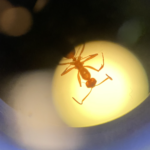 Formica Pallidefulva
Formica Pallidefulva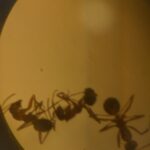 Formica Pallidefulva
Formica Pallidefulva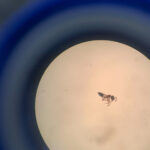 Ant
Ant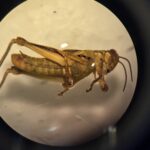 Differential Grasshopper – Melanoplus differentialis
Differential Grasshopper – Melanoplus differentialis Pill Bug (Armadillidium vulgare) – Draft
Pill Bug (Armadillidium vulgare) – Draft